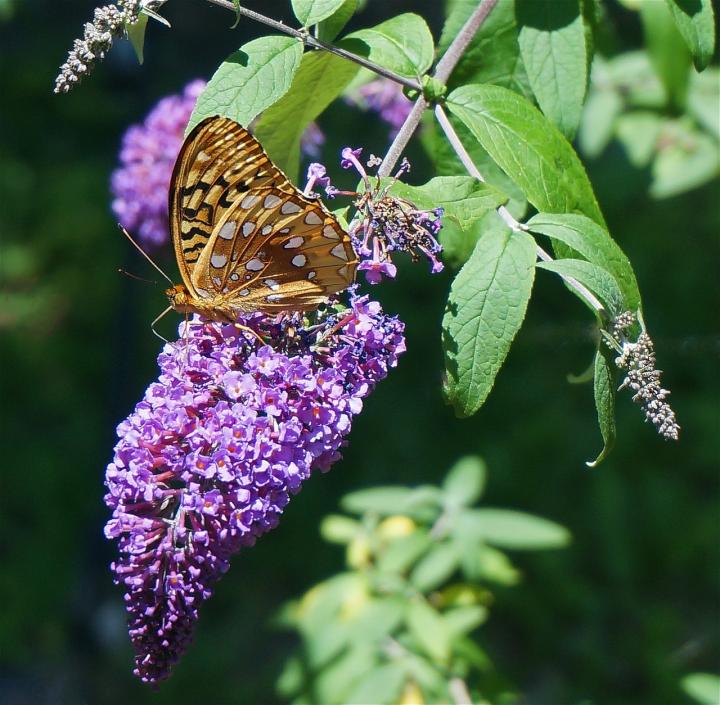
Want a guaranteed butterfly treat and hummingbird magnet? Or, one of the most fragrant of shrubs? Plant a buddleia (butterfly bush).
This fast-growing, deciduous shrub with long, arching shoots will reach heights of 6 to 8 feet. Although the green leaves add a welcome bit of color to any landscape, it is the masses of blossoms—long, seductively spiked trusses—that are special. From summer to autumn, the butterfly bush bears dense panicles, 12 inches or more long, that fill the air with a fruity scent.
At its northern limits, the shrubs can die back, sometimes all the way to the ground. No matter. Butterfly bush is vigorous and undemanding and will send up new shoots, given a sunny location and average garden soil.
Butterfly bushes might be the only shrub with “butterfly” in their name, but they’re far from the only plant that attracts butterflies. Learn more tips for a butterfly-friendly garden.
Note: Butterfly bush can be an invasive species in some areas; check with your local cooperative extension before planting.
Planting
- Buddleias need full sun and fertile, well-drained soil.
- Plant in spring or fall.
- Loosen the soil, mix in compost, and dig a hole twice the diameter of the plant container.
- When placing the plant in the hole, the top of the rootball should be level with the soil surface
- Space plants 5 to 10 feet apart, depending on the variety.
- Water thoroughly.
Care
- Water freely when in growth and sparingly otherwise. In the summer, water if rainfall is less than 1 inch per week.
- Avoid fertilizing butterfly bush; too much fertility supports leaf growth over flower production.
- Remove spent flower spikes to encourage new shoots and flower buds.
- Each spring, apply a thin layer of compost and mulch to retain moisture and control weeds.
- In cold Northern climates, spread mulch up to 6 inches deep around the trunk to nurture it through the winter.
- Buddleias are very late to break dormancy, so don’t be in a hurry to assess winter damage.
- The bush should bloom abundantly even in its first year. In warmer climates, the bushes will grow into trees and develop rugged trunks that peel; peeling is normal.
- In the northern limit of their range, they behave as herbaceous perennials, dying back to the root in cold winters.
- Since they bloom on new wood, even if there is no die-back, cut them back to the ground every spring. Even where winters are mild enough for the stems to survive, prune severely to stimulate abundant growth on which flowers are borne.
Pests/Diseases
- Susceptible to capsid bug, caterpillars, weevils, mullein moth, and spider mites.
- Fungal leaf spots and die-backs can occur.
- Luckily, butterfly bushes are one of many deer-resistant plants.
Recommended Varieties
- ‘Lockinch’ is a spreading, vigorous, deciduous shrub with long, arching shoots. mid-green leaves, and fragrant violet-blue flowers. Grows 8 feet tall and 10 feet wide.
- ‘Petite Indigo’ (syn. ‘Nanho Blue’) has slender leaves and narrow panicles of pale lilac-blue flowers. Grows 4 to 5 feet tall and wide.
- ‘White Profusion’ has large, very white flower spikes and grows 10 feet high and 15 feet wide.






